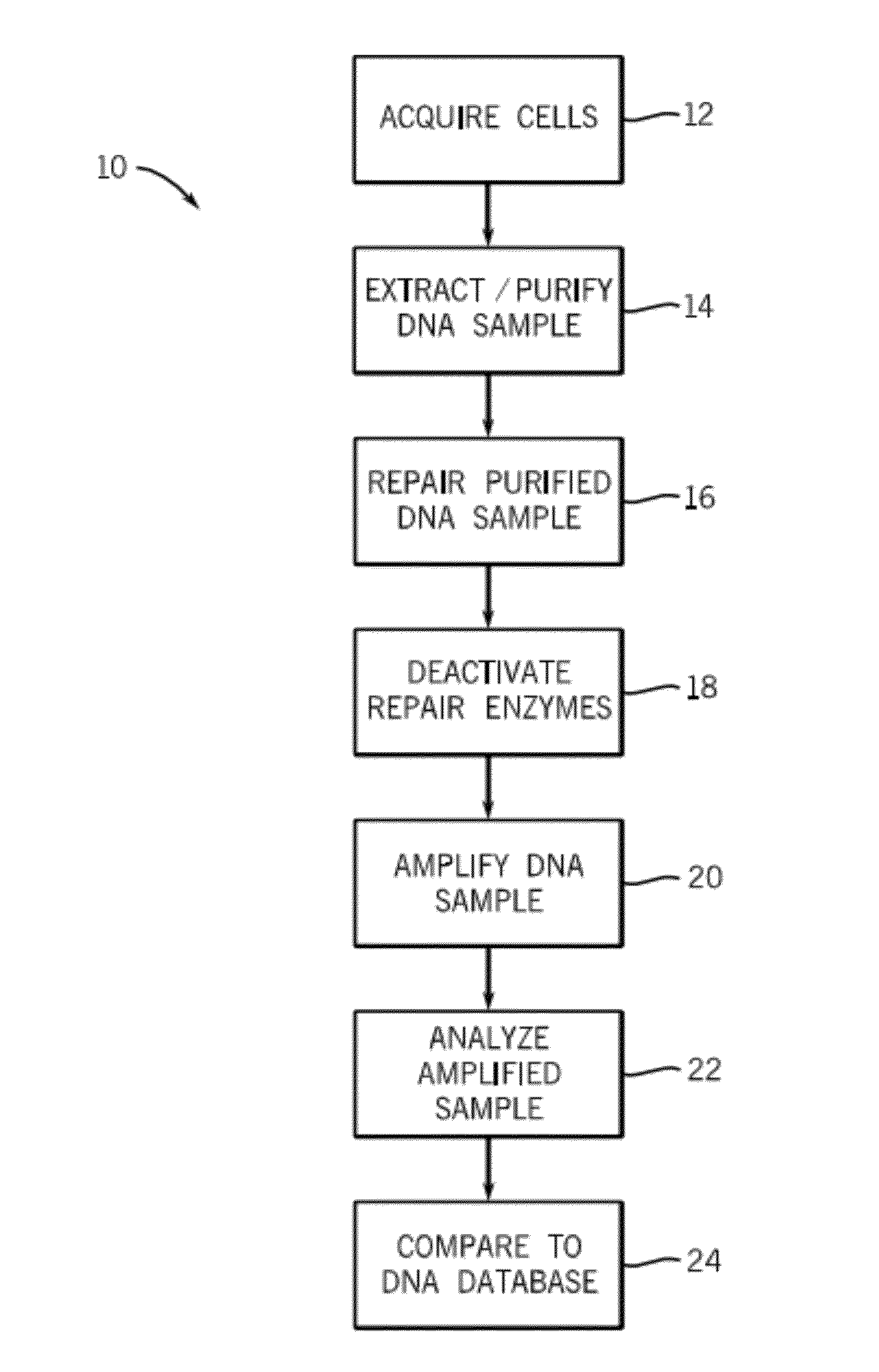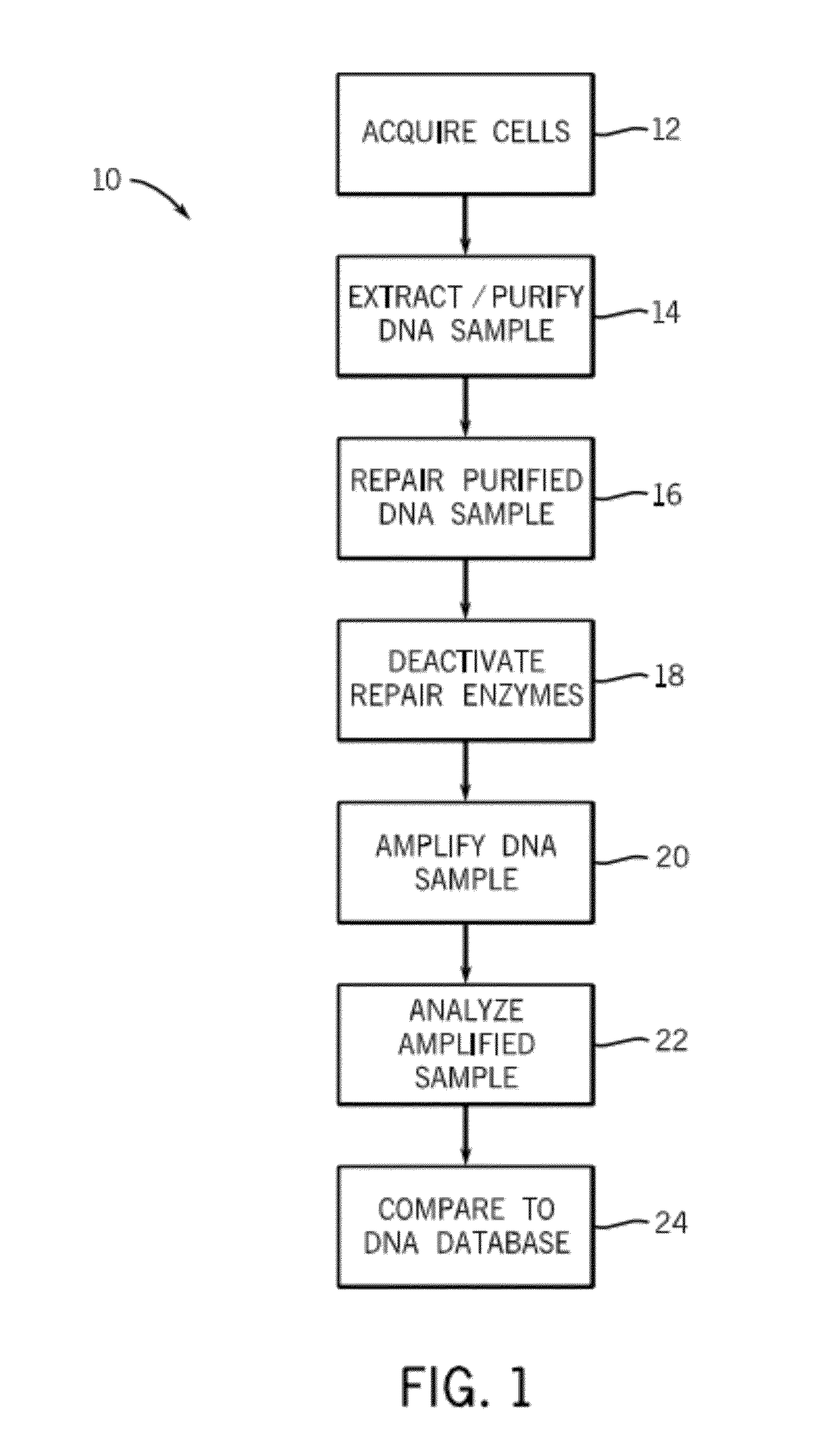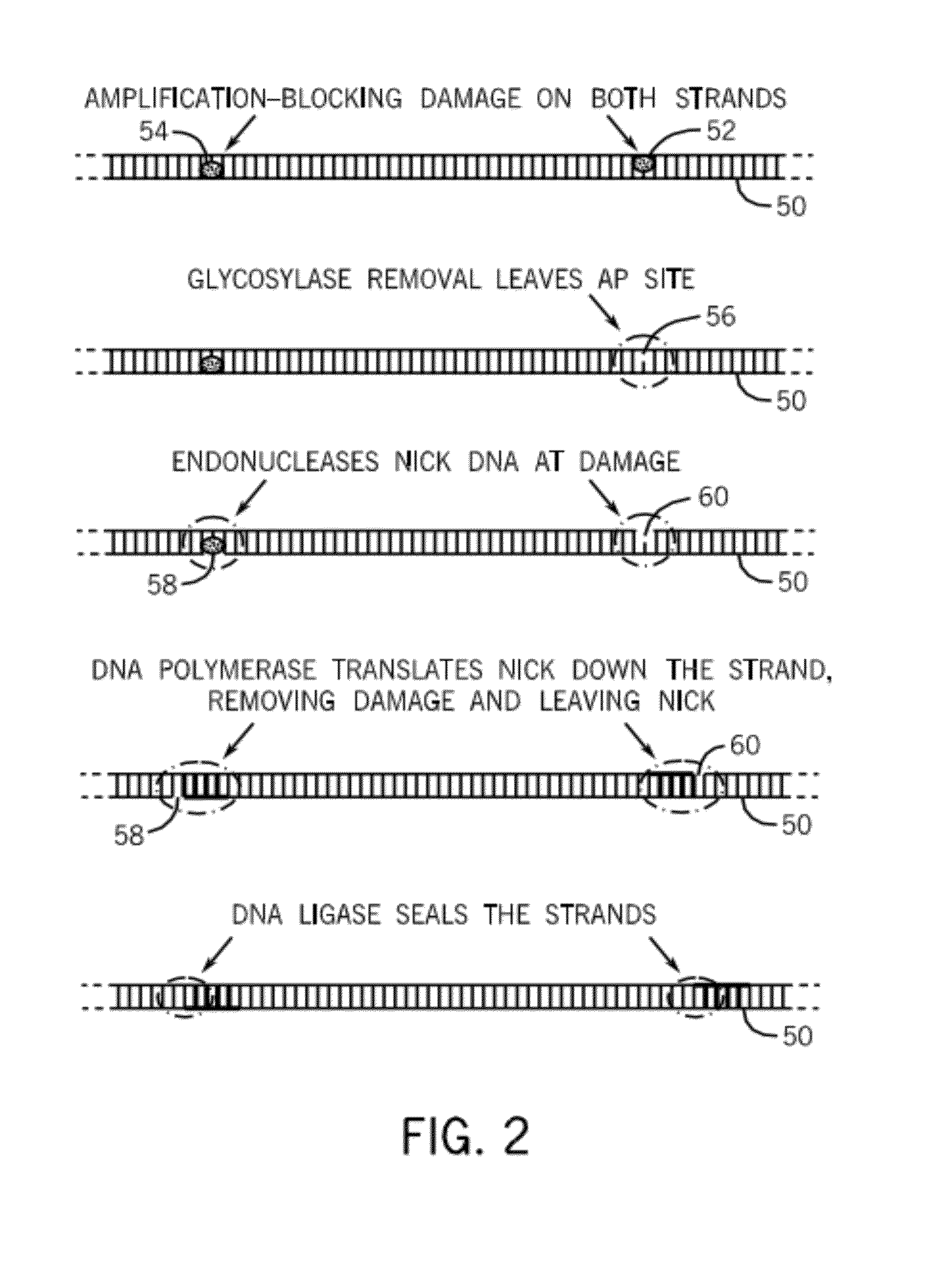Method and kits for repairing nucleic acid sequences
a nucleic acid sequence and repair kit technology, applied in the field of forensic analysis, can solve the problems of unable to be used as evidence in criminal prosecutions, unable to effectively analyze dna samples, and unable to perform dna analysis in forensic laboratories
- Summary
- Abstract
- Description
- Claims
- Application Information
AI Technical Summary
Benefits of technology
Problems solved by technology
Method used
Image
Examples
Embodiment Construction
[0019]Damaged DNA may contain nucleotide modifications and / or breaks (single- or double-stranded) in the DNA that are a block to the standard DNA replication machinery of the cell. The pathways to the repair of damaged nucleic acids may be broken down into four categories: ligation to seal nicks; direct reversal of a nucleotide modification to normal state; recombinational repair using a second DNA copy as template; and excision repair. The methods described herein may employ enzymes to perform one or more of these repair techniques to repair damaged DNA. Methods for DNA repair described herein may be used, for example, for detection of pathogenic organisms, forensic purposes, medical diagnostic purposes, or clinical purposes. Embodiments are also provided that relate generally to methods applicable in analytical, diagnostic, or prognostic applications.
[0020]FIG. 1 illustrates an exemplary process 10 by which the methods described herein for DNA repair may be effectively used in ana...
PUM
| Property | Measurement | Unit |
|---|---|---|
| temperature | aaaaa | aaaaa |
| concentration | aaaaa | aaaaa |
| volume | aaaaa | aaaaa |
Abstract
Description
Claims
Application Information
 Login to View More
Login to View More - R&D
- Intellectual Property
- Life Sciences
- Materials
- Tech Scout
- Unparalleled Data Quality
- Higher Quality Content
- 60% Fewer Hallucinations
Browse by: Latest US Patents, China's latest patents, Technical Efficacy Thesaurus, Application Domain, Technology Topic, Popular Technical Reports.
© 2025 PatSnap. All rights reserved.Legal|Privacy policy|Modern Slavery Act Transparency Statement|Sitemap|About US| Contact US: help@patsnap.com



